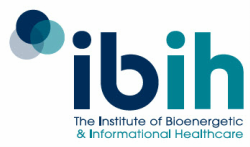Quantum Matching, Body-Field Scanning
Who started it?
Peter Fraser - with the research from Physicist Milo Wolff (Prof., MIT) on Space Resonance Theory.
How does it work?
Physicist and astronomer Milo Wolff discovered what is now known as the Space Resonance Theory. This proposes that in fact reality is made up of not matter but space and that space can have different properties. He goes on to explain that space (and any property of reality that you care to think about) behaves rather like a spherical wave with particles appearing in reality where both an outwave and an inwave interfere constructively. When it is destructive, you have the appearance of nothing or just space as we know it.
Let’s apply this idea to the photon – the interference pattern created by high-frequency electrons – and how, when these patterns are propagated in space, objects become visible to our eyes as the patterns are reflected. The photons are part of an outwave, exploring the universe. Then, the eye picks up an inwave and interprets that to mean that there is an object there in space. In the case of hearing, because of the inwave and the outwave, the sounds, when it is heard, actually seems to be outside the body, instead of where we must expect it – inside the ear!
Having an understanding of Space Resonance theory, the computer (or in some cases white noise diode) generates an Outwave. Then by connecting this data to what most people would class as random events – the computer is able to pick up it’s corresponding inwave that is simply matched to the already existing data in the software. Different device companies do this in different ways but most use a very simple random event generator and just display the results.
Matching
In studying Matching over the years what has become apparent is that nature seems to seek out the best possible answer from the many possibilities that are presented to it. This is different from the statistical probability that rules the quantum world. This is not about chance or randomness. It is more about emergence, ordering, pattern-forming. But most importantly you can only get an answer as good as the question!
In other words both what you are testing and the order that they are tested in are crucial. Both from a clinical application point of view and in terms of accuracy. Peter Fraser and Harry Massey of NES Health spent a great deal of time working out the best possible tests, so that the answer you get from the scan is the best it could possibly be in the context of trying to get people healthy.
Devices that use quantum scanning?
NES Health ProVision System
Peter Fraser - with the research from Physicist Milo Wolff (Prof., MIT) on Space Resonance Theory.
How does it work?
Physicist and astronomer Milo Wolff discovered what is now known as the Space Resonance Theory. This proposes that in fact reality is made up of not matter but space and that space can have different properties. He goes on to explain that space (and any property of reality that you care to think about) behaves rather like a spherical wave with particles appearing in reality where both an outwave and an inwave interfere constructively. When it is destructive, you have the appearance of nothing or just space as we know it.
Let’s apply this idea to the photon – the interference pattern created by high-frequency electrons – and how, when these patterns are propagated in space, objects become visible to our eyes as the patterns are reflected. The photons are part of an outwave, exploring the universe. Then, the eye picks up an inwave and interprets that to mean that there is an object there in space. In the case of hearing, because of the inwave and the outwave, the sounds, when it is heard, actually seems to be outside the body, instead of where we must expect it – inside the ear!
Having an understanding of Space Resonance theory, the computer (or in some cases white noise diode) generates an Outwave. Then by connecting this data to what most people would class as random events – the computer is able to pick up it’s corresponding inwave that is simply matched to the already existing data in the software. Different device companies do this in different ways but most use a very simple random event generator and just display the results.
Matching
In studying Matching over the years what has become apparent is that nature seems to seek out the best possible answer from the many possibilities that are presented to it. This is different from the statistical probability that rules the quantum world. This is not about chance or randomness. It is more about emergence, ordering, pattern-forming. But most importantly you can only get an answer as good as the question!
In other words both what you are testing and the order that they are tested in are crucial. Both from a clinical application point of view and in terms of accuracy. Peter Fraser and Harry Massey of NES Health spent a great deal of time working out the best possible tests, so that the answer you get from the scan is the best it could possibly be in the context of trying to get people healthy.
Devices that use quantum scanning?
NES Health ProVision System
Proudly powered by Weebly
